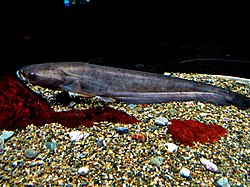| Giant Lake Biwa catfish | |
|---|---|
 | |
| Scientific classification | |
| Kingdom: | Animalia |
| Phylum: | Chordata |
| Class: | Actinopterygii |
| Order: | Siluriformes |
| Family: | Siluridae |
| Genus: | Silurus |
| Species: | S. biwaensis |
| Binomial name | |
| Silurus biwaensis Tomoda, 1961 | |
Silurus biwaensis, the giant Lake Biwa catfish, is a large predatory catfish species endemic to Lake Biwa in Japan.
